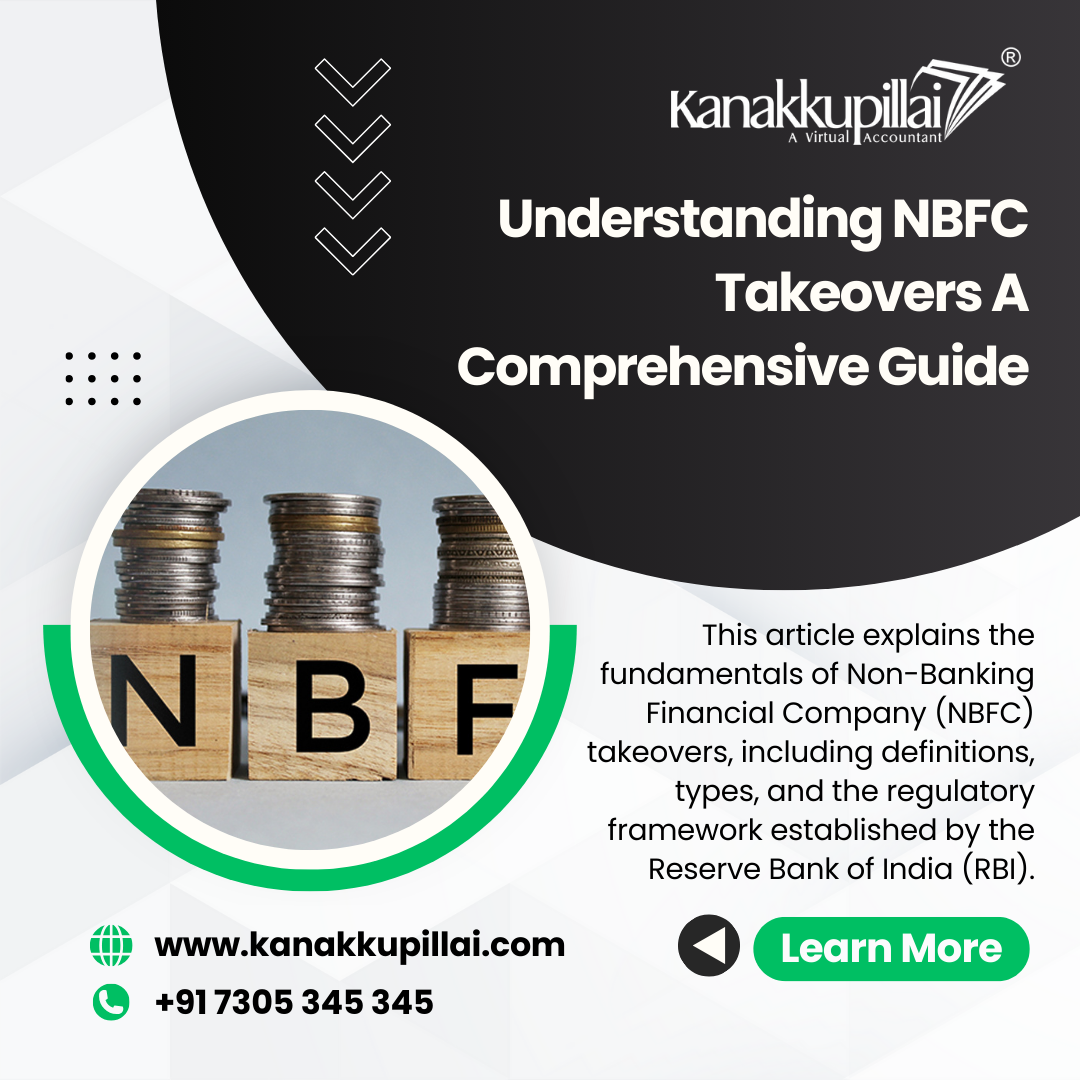Introduction
Takeover of Non-banking Financial Companies (NBFCs) plays a crucial role in India's economic ecosystem, providing a range of services, including loans, asset financing, and investment products. With the growing complexity of the financial market, NBFC takeovers have become increasingly common. This guide aims to provide a comprehensive understanding of NBFC takeovers, exploring their implications, processes, and regulatory framework governing them.
What is an NBFC?
Definition and Functions
Non-Banking Financial Companies are financial institutions that provide banking services without meeting the legal definition of a bank. They are primarily involved in:
- Providing loans and credit facilities
- Asset financing
- Investment in securities
- Leasing and hire purchase
NBFCs are crucial for enhancing financial inclusion by catering to the underserved segments of the market.
Importance in the Financial System
NBFCs contribute significantly to the economy by:
- Supporting small and medium enterprises (SMEs) with credit
- Offering diverse financial products
- Facilitating investment in various sectors
Their flexibility and quicker decision-making processes compared to traditional banks make them an attractive option for borrowers.
Understanding Takeovers
Definition of Takeover
A takeover occurs when one company acquires control over another through the purchase of shares or assets. In the context of NBFCs, takeovers can be strategic for expanding market reach, enhancing product offerings, or achieving operational synergies.
Types of Takeovers
- Friendly Takeover: Both parties agree to the acquisition terms.
- Hostile Takeover: The acquiring company attempts to take control without the consent of the target's management.
- Reverse Takeover: A smaller company acquires a larger company to bypass regulatory requirements for going public.
The Process of NBFC Takeovers
Initial Steps
- Due Diligence: The acquiring company conducts thorough research on the target NBFC's financial health, regulatory compliance, and market position.
- Valuation: Determining the target's fair value is crucial. This involves assessing assets, liabilities, and future earnings potential.
Regulatory Approval
In India, any takeover involving an NBFC requires approval from the Reserve Bank of India (RBI). The RBI evaluates:
- The financial stability of both entities
- The impact on competition
- Compliance with existing regulations
Finalisation and Integration
Once approved, the takeover is finalised through a share purchase agreement or asset transfer. Post-acquisition, integrating operations and aligning corporate cultures are vital for success.
Regulatory Framework Governing NBFC Takeovers
RBI Guidelines
The RBI guidelines have been established to ensure that takeovers do not disrupt financial stability. Key aspects include:
- Fit and Proper Criteria: Acquirers must meet specific criteria regarding their financial background and experience.
- Capital Adequacy Norms: Post-takeover, the combined entity must adhere to capital adequacy requirements.
Securities Exchange Board of India (SEBI) Regulations
If an NBFC is publicly listed, SEBI regulations come into play. These include:
- Open Offer Requirement: Acquirers must make an open offer to existing shareholders when acquiring a significant stake.
- Disclosure Norms: Transparency in communication regarding the takeover process is mandated.
Implications of NBFC Takeovers
For Acquirers
- Market Expansion: Acquiring an existing NBFC allows for immediate access to a customer base and established operations.
- Diversification: Acquirers can diversify their portfolios by adding new products or services offered by the target NBFC.
For Targeted NBFCs
- Increased Capital: A takeover can provide much-needed capital for growth and expansion.
- Operational Synergies: Merging operations can lead to cost savings and improved efficiencies.
For Customers
Takeovers can lead to enhanced service offerings as combined entities leverage each other's strengths. However, customers may also face changes in policies or service quality during integration.
Challenges in NBFC Takeovers
Cultural Integration
Merging two distinct corporate cultures can pose significant challenges. Management teams must foster a unified culture post-takeover to ensure employee retention and morale.
Regulatory Hurdles
Navigating through regulatory approvals can be time-consuming and complex. Delays in obtaining necessary clearances can hinder operational timelines.
Market Reactions
Investors may react negatively to news about takeovers if they perceive risks associated with integration or if there are concerns about strategic fit.
Conclusion
Understanding the Takeover of NBFC is essential for financial sector stakeholders. These transactions not only influence market dynamics but also shape the future landscape of financial services in India. By being aware of the processes involved and regulatory frameworks governing these takeovers, investors and consumers alike can make informed decisions that align with their financial goals.
As the market continues to evolve, staying updated on trends related to NBFC takeovers will be critical for effectively navigating this complex environment.





Comments